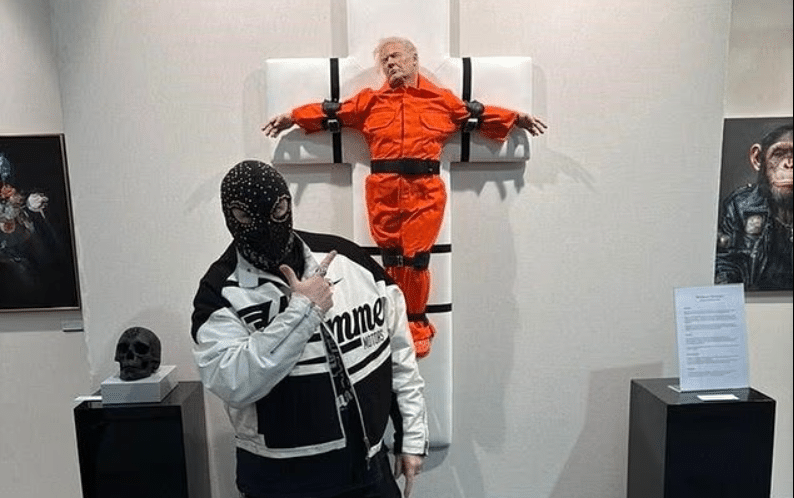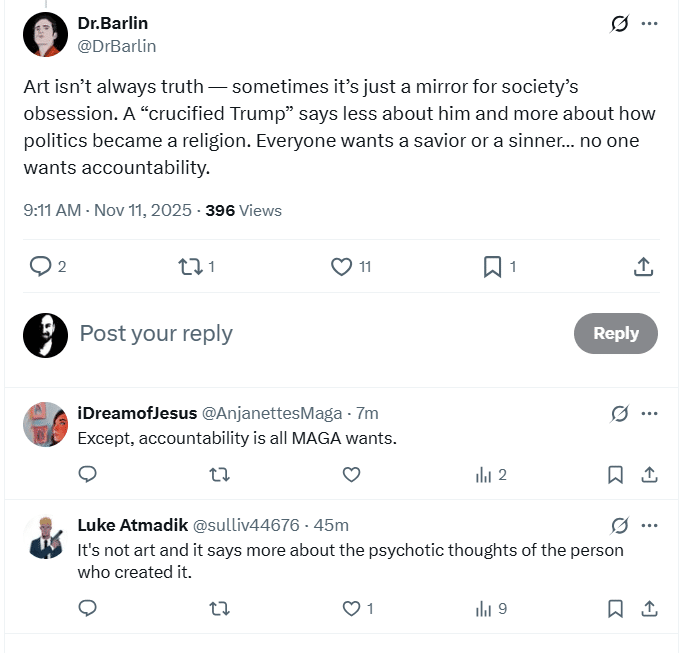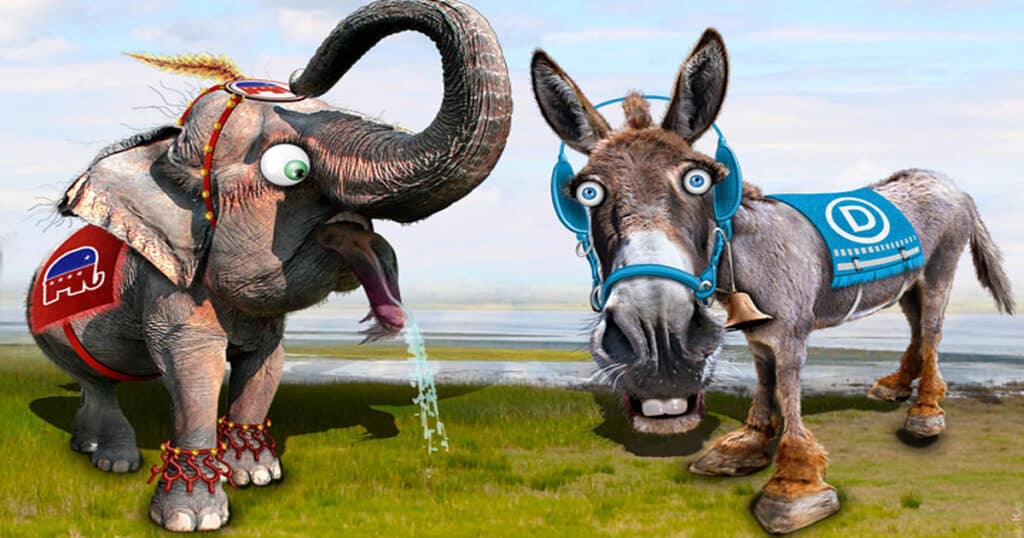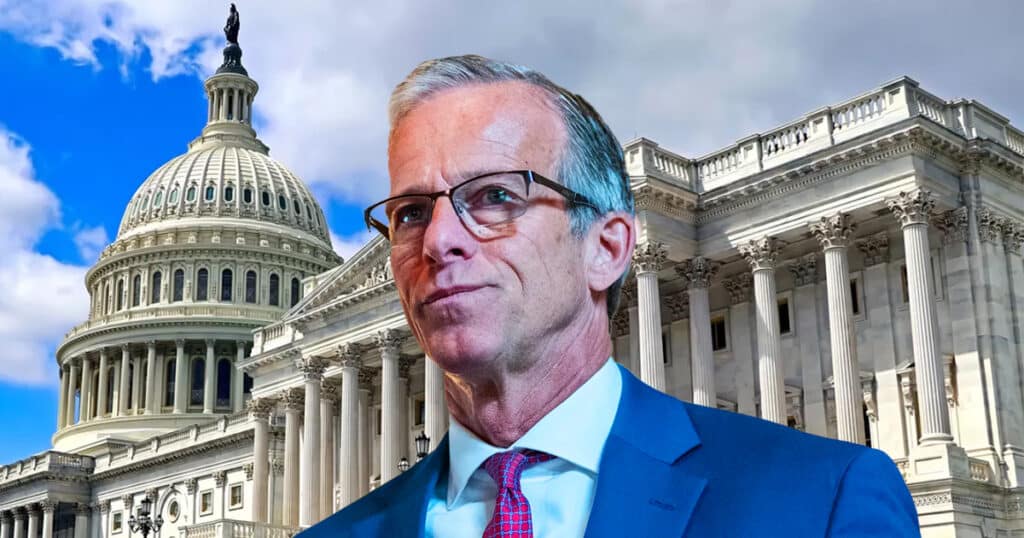
Trump Sculpture Tests the Line Between Faith and Politics
A new art installation in Switzerland has sparked both fascination and controversy–a large sculpture depicting President Trump nailed to a cross while wearing an orange prison jumpsuit.
The full tweet:
A controversial sculpture in Switzerland shows President Trump nailed to a cross while wearing an orange prison jumpsuit. The artwork titled “Saint or Sinner” was created by British artist Mason Storm, who says it explores the clash between religion and politics and questions whether Trump deserves heaven or a lethal injection. Earlier this year, President Trump said, “I don’t think there’s anything that will get me into heaven. Maybe I’m just not heaven-bound.”
Interesting name, Mason Storm. Or comical.
The sculpture of course places Trump at the center of the familiar Christian image–the Crucifixion–reimagined through a modern, political lens. From the Daily Mail:
Owner of Galerie Gleis 4 that organized the exhibit, Konrad Breznik, told AFP: ‘The skin is so realistic, it’s really scary.’
The controversial artist posted about the piece on Instagram and wrote: ‘Half life-size Donny Trump, probably the most decisive politician of the modern era, or past for that matter.
‘Despised by some, beloved by others, so is he a saint on a cross or a sinner on the lethal injection gurney? You decide.’…
Breznik told AFP he believes the US politician would enjoy the artwork, simply because of the foot traffic it has garnered.
‘I do absolutely think that Mr. Trump might see himself very well in the role of a modern Jesus,’ Breznik said.
‘I’m pretty sure he is very much convinced that he is doing the right thing.’
The work’s timing has added to its resonance. Earlier this year, Trump himself made a rare comment about faith, perhaps or perhaps not in jest with the media, telling an interviewer, “I don’t think there’s anything that will get me into heaven. Maybe I’m just not heaven-bound.” The statement was widely circulated and interpreted in various ways, from humility to despair.
The sculpture’s fusion of religious symbolism and political commentary touches on a larger cultural trend–where sacred imagery is increasingly used–and abused–as a medium for social critique or provocation. Invariably it runs offensive, particularly for those who love Christ, but that is not my purpose today. My purpose is the perhaps indirect deeper questions raised from such displays that transcend the political moment.
We have to be wary of memetic sweeps.
How ’bout this revival of which we speak start with the story of Ninive and Jonas of Scripture?
I get it. People want to feel they are a part of something. They want to feel they have a voice. They want to feel that they matter. But if we allow this spreading memetic energy to overwhelm us, we may later find ourselves regretting that we didn’t test the spirits as Scripture warns.
For when the Spirit truly moves, he bears witness not to personalities and platforms, not to fireworks and fool’s gold, not to rallies and rock concerts, but to Christ and “that rugged cross.” Christ is who is celebrated, the crucified Christ in whom St Paul glories, and it is typically done with solemnity, silence, and a gaze toward the East from thence he shall return.
In a world constantly pulled toward outrage and spectacle–often at the expense of who Christ truly was and is–Christians may find it worth asking: what is lost when faith becomes just another prop in the theater of politics?
The Crucifixion is not merely a symbol of suffering or punishment–it is the central mystery of mankind’s redemption, the act through which sin and pride were overcome by a love none of us deserves. To interpret it only through the lens of power, partisanship, or personality is to miss its eternal meaning.
Memetic energy, and where that nefarious Mockingbird media can take us, can be fatal.
Art, at its best, points toward truth. But when the noise of politics drowns out reverence, the danger is that we no longer see Christ at all—only our reflections in the controversies of the day.
Not to mention the question on whether or not this is even “art” at all. You could probably guess my opinion on the matter.

Whether one sees Storm’s sculpture as satire or sacrilege, artistic or asinine, its appearance serves as a reminder: faith and salvation cannot be reduced to political theater. The cross is not a prop for power or protest–it is a path, one specifically commanded by Christ.



